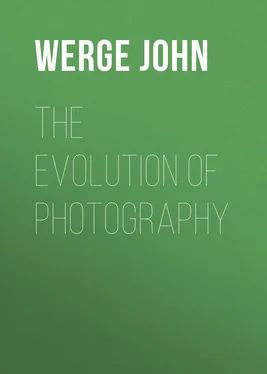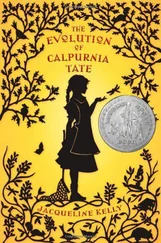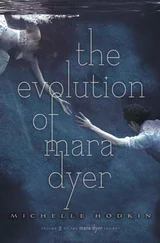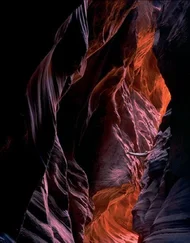John Werge - The Evolution of Photography
Здесь есть возможность читать онлайн «John Werge - The Evolution of Photography» — ознакомительный отрывок электронной книги совершенно бесплатно, а после прочтения отрывка купить полную версию. В некоторых случаях можно слушать аудио, скачать через торрент в формате fb2 и присутствует краткое содержание. Жанр: visual_arts, foreign_home, на английском языке. Описание произведения, (предисловие) а так же отзывы посетителей доступны на портале библиотеки ЛибКат.
- Название:The Evolution of Photography
- Автор:
- Жанр:
- Год:неизвестен
- ISBN:нет данных
- Рейтинг книги:5 / 5. Голосов: 1
-
Избранное:Добавить в избранное
- Отзывы:
-
Ваша оценка:
- 100
- 1
- 2
- 3
- 4
- 5
The Evolution of Photography: краткое содержание, описание и аннотация
Предлагаем к чтению аннотацию, описание, краткое содержание или предисловие (зависит от того, что написал сам автор книги «The Evolution of Photography»). Если вы не нашли необходимую информацию о книге — напишите в комментариях, мы постараемся отыскать её.
The Evolution of Photography — читать онлайн ознакомительный отрывок
Ниже представлен текст книги, разбитый по страницам. Система сохранения места последней прочитанной страницы, позволяет с удобством читать онлайн бесплатно книгу «The Evolution of Photography», без необходимости каждый раз заново искать на чём Вы остановились. Поставьте закладку, и сможете в любой момент перейти на страницу, на которой закончили чтение.
Интервал:
Закладка:
In the foregoing description it will be observed how much importance M. Niépce attached to the necessity of protecting the solution and prepared plate from moisture, and that no precautions are given concerning the effect of white light. It must be remembered, however, that the material employed was very insensitive, requiring many hours of exposure either in the camera or under a print or drawing placed in contact with the prepared surface, and consequently such precaution might not have been deemed necessary. Probably M. Niépce worked in a subdued light, but there can be no doubt about the necessity of conducting both the foregoing operations in yellow light. Had M. Niépce performed his operations in a non-actinic light, the plates would certainly have been more sensitive, and the unacted-on parts would have been more soluble; thus rendering both the time of exposure and development more rapid.
After the plate was prepared and dried, it was exposed in the camera, or by superposition, under a print, or other suitable subject, that would lie flat. For the latter, an exposure of two or three hours in bright sunshine was necessary, and the former required six or eight hours in a strong light. Even those prolonged exposures did not produce a visible image, and the resultant picture was not revealed to view until after a tedious process of dissolving, for it could scarcely be called development. M. Niépce himself says, “The next operation then is to disengage the shrouded imagery, and this is accomplished by a solvent.” The solvent consisted of one measure of the essential oil of lavender and ten of oil of white petroleum or benzole. On removing the tablet from the camera or other object, it was plunged into a bath of the above solvent, and left there until the parts not hardened by light were dissolved. When the picture was fully revealed, it was placed at an angle to drain, and finished by washing it in water.
Except for the purpose of after-etching, M. Niépce’s process was of little commercial value then, but it has since been of some service in the practice of photo-lithography. That, I think, is the fullest extent of the commercial or artistic advantages derived from the utmost success of M. Niépce’s discoveries; but what he considered his failures, the fact that he employed copper plates coated with silver for his heliographic tablets, and endeavoured to darken the clean or clear parts of the silvered plates with the fumes of iodine for the sake of contrast only, may be safely accepted as the foundation of Daguerre’s ultimate success in discovering the extremely beautiful and workable process known as the Daguerreotype.
M. Niépce appears to have done very little more towards perfecting the heliographic process after joining Daguerre; but the latter effected some improvements, and substituted for the bitumen of Judea the residuum obtained by evaporating the essential oil of lavender, without, however, attaining any important advance in that direction. After the death of M. Nicéphore Niépce, a new agreement was entered into by his son, M. Isidore Niépce, and M. Daguerre, and we must leave those two experimentalists pursuing their discoveries in France while we return to England to pick up the chronological links that unite the history of this wonderful discovery with the time that it was abandoned by Wedgwood and Davy, and the period of its startling and brilliant realization.
In 1834, Mr. Henry Fox Talbot, of Lacock Abbey, Wilts, “began to put in practice,” as he informs us in his memoir read before the Royal Society, a method which he “had devised some time previously, for employing to purposes of utility the very curious property which has been long known to chemists to be possessed by the nitrate of silver—namely, to discolouration when exposed to the violet rays of light.” The statement just quoted places us at once on the debateable ground of our subject, and compels us to pause and consider to what extent photography is indebted to Mr. Talbot for its further development at this period and five years subsequently. In the first place, it is not to be supposed for a moment that a man of Mr. Talbot’s position and education could possibly be ignorant of what had been done by Mr. Thomas Wedgwood and Sir Humphry Davy. Their experiments were published in the Journal of the Royal Institution of Great Britain in June, 1802, and Mr. Talbot or some of his friends could not have failed to have seen or heard of those published details; and, in the second place, a comparison between the last records of Wedgwood and Davy’s experiments, and the first published details of Mr. Talbot’s process, shows not only that the two processes are identically the same, but that Mr. Talbot published his process before he had made a single step in advance of Wedgwood and Davy’s discoveries; and that his fixing solution was not a fixer at all, but simply a retardant that delayed the gradual disappearance of the picture only a short time longer. Mr. Talbot has generally been credited with the honour of producing the first permanent sun-pictures on paper; but there are grave reasons for doubting the justice of that honour being entirely, if at all, due to him, and the following facts and extracts will probably tend to set that question at rest, and transfer the laurel to another brow.
To the late Rev. J. B. Reade is incontestably due the honour of having first applied tannin as an accelerator, and hyposulphite of soda as a fixing agent, to the production and retention of light-produced pictures; and having first obtained an ineffaceable photograph upon paper. Mr. Talbot’s gallate of silver process was not patented or published till 1841; whereas the Rev. J. B. Reade produced paper negatives by means of gallic acid and nitrate of silver in 1837. It will be remembered that Mr. Wedgwood had discovered and stated that the chloride of silver was more sensitive when applied to white leather, and Mr. Reade, by inductive reasoning, came to the conclusion that tanned paper and silver would be more sensitive to light than ordinary paper coated with nitrate of silver could possibly be. As the reverend philosopher’s ideas on that subject are probably the first that ever impregnated the mind of man, and as his experiments and observations are the very earliest in the pursuit of a gallic acid accelerator and developer, I will give them in his own words.—“No one can dispute my claim to be the first to suggest the use of gallic acid as a sensitiser for prepared paper, and hyposulphite of soda as a fixer. These are the keystones of the arch at which Davy and Young had laboured—or, as I may say in the language of another science, we may vary the tones as we please, but here is the fundamental base. My use of gallate of silver was the result of an inference from Wedgwood’s experiments with leather, ‘which is more readily acted upon than paper’ ( Journal of the Royal Institution , vol. i., p. 171). Mrs. Reade was so good as to give me a pair of light-coloured leather gloves, that I might repeat Wedgwood’s experiment, and, as my friend Mr. Ackerman reminds me, her little objection to let me have a second pair led me to say, ‘Then I will tan paper.’ Accordingly I used an infusion of galls in the first instance in the early part of the year 1837, when I was engaged in taking photographs of microscopic objects. By a new arrangement of lenses in the solar microscope, I produced a convergence of the rays of light, while the rays of heat, owing to their different refractions, were parallel or divergent. This fortunate dispersion of the calorific rays enabled me to use objects mounted in balsam, as well as cemented achromatic object glasses; and, indeed, such was the coolness of the illumination, that even infusoria in single drops of water were perfectly happy and playful ( vide abstracts of the ‘Philosophical Transactions,’ December 22nd, 1836). The continued expense of an artist—though, at first, I employed my friend, Lens Aldons—to copy the pictures on the screen was out of the question. I therefore fell back, but without any sanguine expectations as to the result, upon the photographic process adopted by Wedgwood, with which I happened to be well acquainted. It was a weary while , however, before any satisfactory impression was made, either on chloride or nitrate paper. I succeeded better with the leather; but my fortunate inability to replenish the little stock of this latter article induced me to apply the tannin solution to paper, and thus I was at once placed, by a very decided step, in advance of earlier experimenters, and I had the pleasure of succeeding where Talbot acknowledges that he failed.
Читать дальшеИнтервал:
Закладка:
Похожие книги на «The Evolution of Photography»
Представляем Вашему вниманию похожие книги на «The Evolution of Photography» списком для выбора. Мы отобрали схожую по названию и смыслу литературу в надежде предоставить читателям больше вариантов отыскать новые, интересные, ещё непрочитанные произведения.
Обсуждение, отзывы о книге «The Evolution of Photography» и просто собственные мнения читателей. Оставьте ваши комментарии, напишите, что Вы думаете о произведении, его смысле или главных героях. Укажите что конкретно понравилось, а что нет, и почему Вы так считаете.












